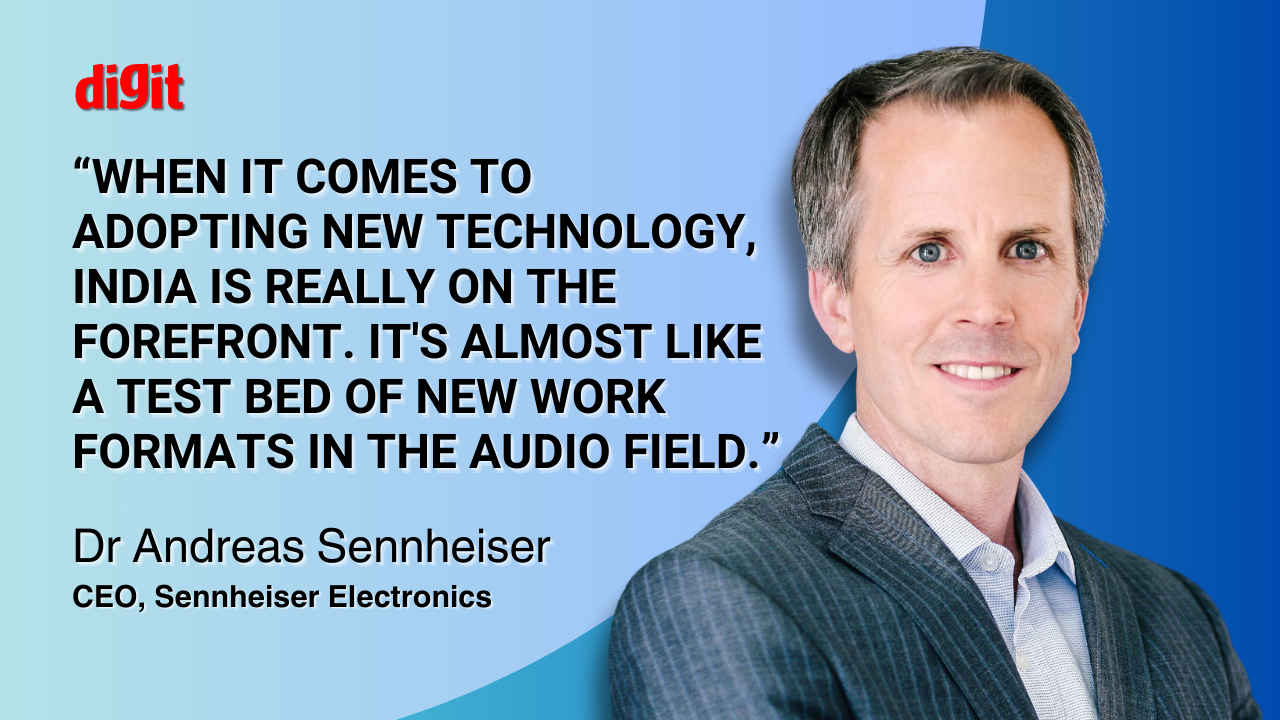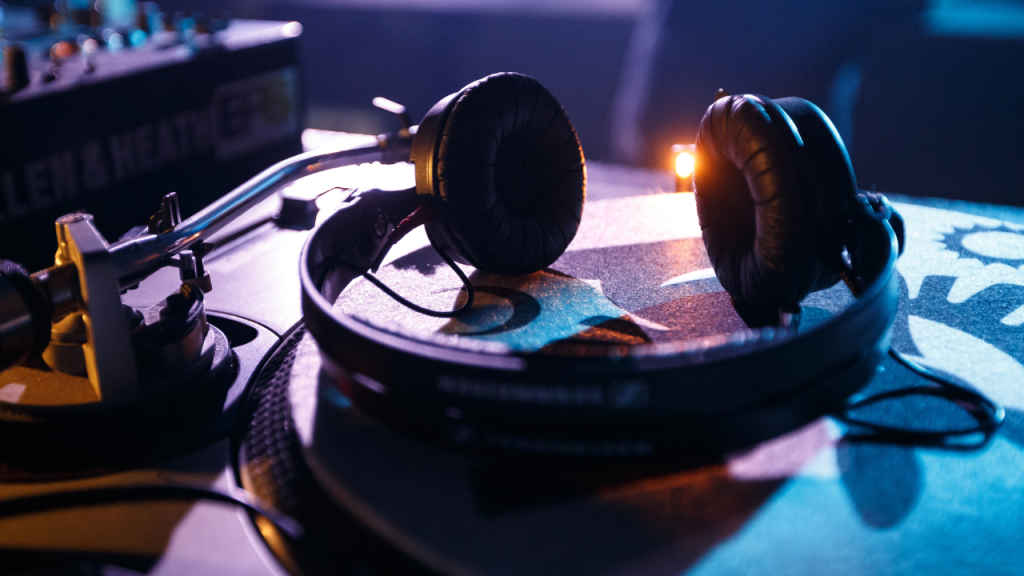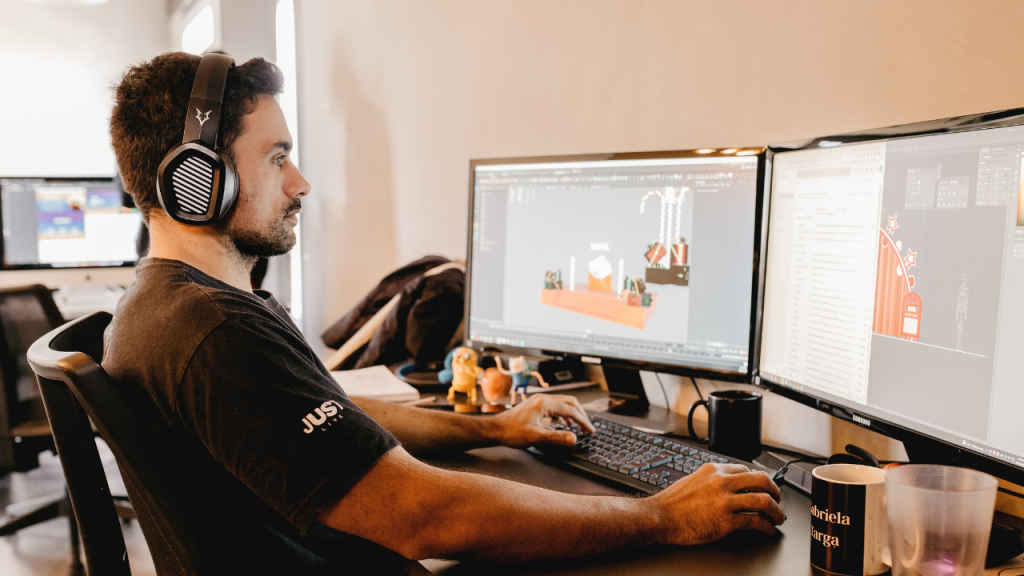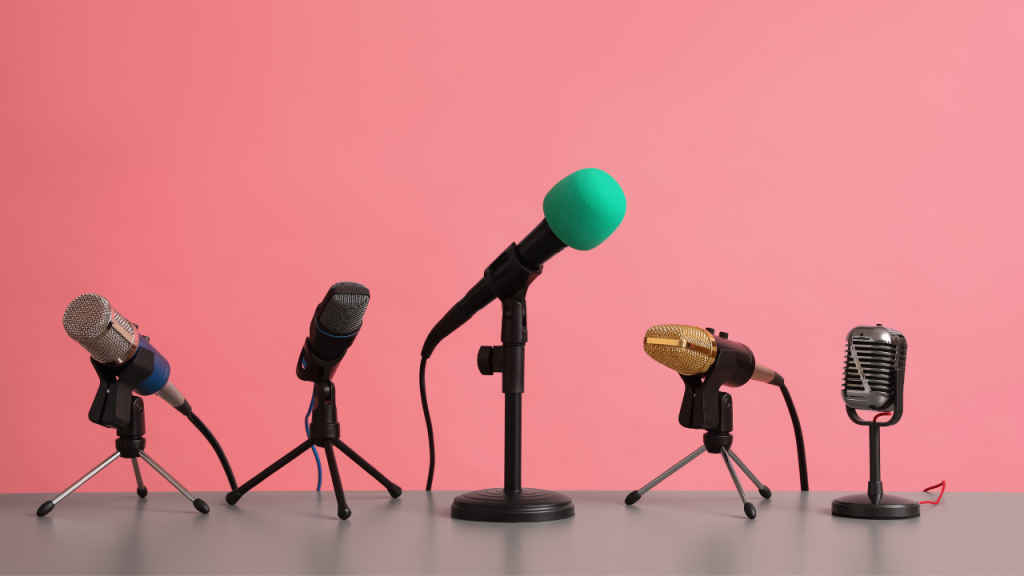Sennheiser CEO discusses pro audio evolution and AI’s role in it

At a time when the audio industry worldwide, and particularly in India, is experiencing transformative changes, spurred by technological advancements and shifts in consumer behaviour, we spoke with Dr Andreas Sennheiser, CEO of the renowned audio company Sennheiser, in a chat on the audio company’s vision and strategies for the vibrant Indian market.
 Survey
SurveyAlso read: Harmonising Sustainability and Sound – How a design student made headphones out of bamboo
Sennheiser revealed insights into everything from how AI is impacting audio technology to the future of audio entertainment, and much more. Edited excerpts of our interview follow:
Q) What has been your impression of the pro audio market in India?
Since the pandemic, we’ve seen a lot of change when it comes to adopting new technology and also new ways of working, particularly hybrid work. Producing content for hybrid consumption has advanced greatly. The pandemic was a catalyst for a lot of new formats that we see right now in the corporate, higher education world, and also in the broadcast world.

Particularly when it comes to higher education, we see most universities really ramping up their technology when it comes to audio streaming so that students can participate from home or in the classroom. And most corporations have fully embraced the idea of hybrid work or even work from home. Even the broadcast world brought us some new hybrid work formats.
Q) Sennheiser’s India and APAC direction?
Our focus on the pro audio world is really to make sure that we’re even closer to our end users and understand their workflows better than before. It will help us bring out products that just make it easier for customers to use, as we use more and more complex technology but want to make sure that the customer sees less of it. So there’s greater emphasis in making seamless integration of user interfaces across all our products, like the ceiling microphones integrate very well with just the normal standard mics, for instance.
We are focused on enhancing the user experience, and in order to do that we have to research and develop the technology while understanding the workflow of our users more intimately. That’s where we’re putting all our management attention, all our R&D efforts and all our resources into the pro audio field.
Q) India’s role in Sennheiser’s global product development roadmap?
Yeah, India has a very strong role when it comes to identifying new ways of working. That was very eminent already when I was here before the pandemic as well. OB van crews were becoming few and far in between, as use of mobile devices for live TV broadcast started growing. Absence of a great infrastructure led to very innovative solutions among tech adopters in India. And that’s why, for me, still today when it comes to adopting new technology, India is really on the forefront.
Also read: How AIWA audio aims to give consumers a premium nostalgic trip
It’s almost like a test bed of new technologies and new work formats in the audio field. And in order to do that, of course we have our development processes. We have a division in our company called Future Technologies, which rolls out innovative solutions which can be tested in India particularly, and then may be scaled to the rest of the portfolio across other markets.
Q) Hints on future Sennheiser products and tech?
Well, one technology that is coming out in 2024 is our new multi-channel wireless system based on wideband technology. For the first time, we won’t have single carrier transmission, but really wide band transmission in time division multiplexing, using different frequencies and different time slots, which makes it extremely robust and extremely simple to operate. With that product, you would have the simplicity of switching on a cell phone combined with the perfection of audio from Sennheiser.

Q) Is the Indian audio market still price sensitive?
It is developing into a direction where value for money is still appreciated, but the value is much more put into how well it actually serves the purpose of the application. So it’s not about the lowest price anymore, but it’s really about the highest value for what you’re getting. So a good example is our ceiling microphone solutions and also the classroom, the handheld solution – speech line digital. They’re being appreciated very much because they just work.
For example, if you have a university with 200-400 classrooms, you don’t want to save 10% on the product and then have a myriad of technicians that run around to fix it, but you’d rather spend a little bit more on the product and then operate it from a central location. And this is now really being appreciated also by the Indian market. So it’s about the value of the solution and not necessarily the lowest possible price.
Q) Similarities and differences between Sennheiser India vs rest of world?
It is very similar to other markets with the exception that of course it needs to cover quite a fragmented market in some areas, particularly in the rental business. It’s still highly fragmented and therefore we have just more feet on the ground here than we would have in other countries. So we have more than 50 people in India working for us with very high technical skills, particularly because that’s the value that we can provide to the Indian market.
So every salesperson that is not just somebody who can close deals, but actually is somebody who can help the customer select the right product, be technically skilled enough to even fix problems. So that’s why our approach to India may be a little bit wider in terms of staff base and a little bit deeper when it comes to technology just because we have to cover such a large market that is still quite fragmented.
Q) How is AI impacting the audio world?
AI is an exciting thing because it allows us to make our microphones particularly smarter. So we will come out with microphones that will know what they’re listening to and can be selective, what they want to listen to – is it speech? Is it background noise? Is it feedback? That’s how we can make our products smarter. It’s not just an input device that captures audio into another system, but it becomes an input device that is much smarter than it was before.
Also read: Diving deep into Dolby: In conversation with Sameer Seth and Jayant Shah at Dolby Laboratories India
And then of course, on the processing side we are using AI now in test labs in order to make different audio signals sound very much the same. That’s very important when you have conferences and somebody sitting in a room with a lot of reverb, another one sitting in a studio like room, and if you have these different audio coming in, it’s very stressful for the brain. So it helps to reduce fatigue If we can normalise these different audio streams and just make it more, more nice to listen to.
Q) Future of audio entertainment?
We see more and more people enjoying live concerts again. I think it’s a human need for us all to enjoy music together, because that has a uniting element for everyone. And so that’s definitely one of the high growth vectors right now. The other thing that we see coming more and more is that these events are no longer just happening in one place, but actually are being teleported to other locations.
The term metaverse may be overused, but what I like to use it for is that actually we can teleport an experience that happens in Madison Square Garden, for instance, using AR and XR technology combined, we can actually teleport that into someone’s living room and or someone’s VR goggles. I guess this part will become more and more interesting also for artists because they reach not just the 50,000 people in the venue, but they can reach hundreds of millions of people around the world with almost the same experience.
Q) Challenges and opportunities of pro audio?
One of the challenges is that you only appreciate great audio once you’ve tasted it. It’s like a great bottle of wine that you can look at the bottle forever, but you won’t know how good it is until you open it. And that’s the same with audio. So getting the experience is extremely important.

Educating not just the industry but educating end users about what’s the difference between okay audio and great audio, particularly when it comes to immersive formats like our two channel spatial audio that has been used by Netflix now for quite a while, and also other higher audio formats like the Ambeo format. That is something that if you experience once, you wouldn’t go back. Listening to audio from something like the HE-1, if you experience something that is just beyond the imaginable, it’s very difficult to go back. And so that’s one challenge, but that’s a good challenge, because every time we have somebody that has had the experience, they’re pretty much sold on it.
The more difficult challenge is more on the technology side, the frequency reduction. More and more frequencies are being sold off or co-assigned to telecom companies. On the one hand, it keeps us on our toes to keep developing new technologies for our customers. On the other hand, it’s a challenge to make sure that our customers are safe in their investment and don’t have to buy new gear every 3-4 years just because the frequencies were sold off.
Q) Andreas’ own personal audio setup?
I have my listening set up. That’s a pair of Neumann KH 420 with two subwoofers for the main living room. Then I have my production setup that’s for my online meetings and podcast and that’s two speakers Neumann KH 150 and Neumann KMS 104 as a microphone and the new interface, the Neumann MT 48, which works perfect in such an environment. My favourite microphone on stage definitely would be the Sennheiser D6000–although my singing is more for the family. It’s more passion than talent. And therefore I don’t publicly showcase that.
Q) Advice on how to buy pro audio gear?
I would try out different things and really start small and then move your way up to the point where you don’t hear or feel a difference anymore. Because I think it’s very important that people get the right gear for their solution. It doesn’t make sense to buy a Bentley to drive a mile every day. It’s important that everyone exposes themselves to different products with different price points and then really select the right one for their needs.
And we have a lot of tutorial videos on our Sennheiser Sound Academy, which helps people not just to select the right products but also to operate them in the right way. Because if you want to mic an instrument, you have to know how to mic it properly. Otherwise the best gear doesn’t work the right way. So I think it’s a combination of selecting the right product by just trying out different audio products and getting education on how to use it in the right way.
Jayesh Shinde
Executive Editor at Digit. Technology journalist since Jan 2008, with stints at Indiatimes.com and PCWorld.in. Enthusiastic dad, reluctant traveler, weekend gamer, LOTR nerd, pseudo bon vivant. View Full Profile